The Best Light Therapy Lamps
Do you happen to fall in a strange state of melancholy each time winter approaches? It’s not just that you miss summer but it could be that seasonal affective disorder is catching up on you. We’ve assembled a list of the best light therapy lamps to help you fight seasonal blues, so let’s take a look at them.
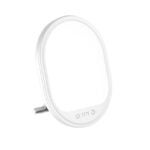
1. Erligpowht Store Light Therapy Lamp – Editor's Choice
- Price Range: $20 – $30
- Size: 6.9 x 5.1 x 0.6 inches
- Intensity: 10,000 lux
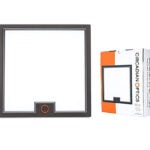
2. Circadian Optics Light Therapy Lamp
- Price Range: $20 – $30
- Size: 6.69 x 3.94 x 6.3 inches
- Intensity: 10,000 lux
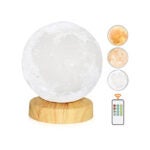
3. Rsccleaner Store Light Therapy Lamp
- Price Range: $40 – $50
- Size: 271.65″ D x 5.91″ W x 6.93″ H
- Intensity: 10,000 lux
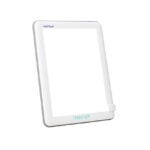
4. Verilux® HappyLight®
- Price Range: $30 – $40
- Size: 6.6″ D x 6.5″ W x 8.58″ H
- Intensity: 10,000 lux
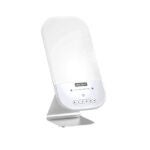
5. HILOLY Store Light Therapy Lamp
- Price Range: $60 – $70
- Size: 6.88 x 4 x 14.56 inches
- Intensity: 10,000 lux
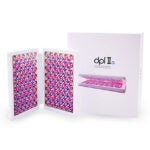
6. dpl IIa-Professional Light Panel
- Price Range: $300 – $400
- Size: 11 x 4.25 x 9.5 inches
- Intensity: not specified
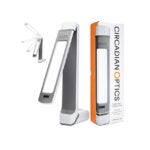
7. Circadian Optics Light Lumos Therapy Lamp
- Price Range: $60 – $70
- Size: 14 x 1.5 x 3.5 inches
- Intensity: 10,000 lux
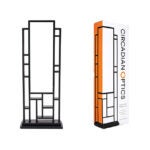
8. Circadian Optics Light Lattis Therapy Lamp
- Price Range: $60 – $70
- Size: 5.51″ D x 6″ W x 15.75″ H
- Intensity: 10,000 lux
Table Of Contents
- Best Light Therapy Lamps
- 1. Erligpowht Store Light Therapy Lamp
- 2. Circadian Optics Light Therapy Lamp – Runner Up
- 3. Rsccleaner Store Light Therapy Lamp – Best Design
- 4. Verilux® HappyLight® – Budget Pick
- 5. HILOLY Store Light Therapy Lamp – Best Portable
- 6. dpl IIa-Professional Light Panel – Best Anti-Aging
- 7. Circadian Optics Light Lumos Therapy Lamp
- 8. Circadian Optics Light Lattis Therapy Lamp – Best Value
- What Is a Light Therapy Lamp?
- How Do Light Therapy Lamps Work?
- Types of Light Therapy Lamps
- What to Consider When Buying a Light Therapy Lamp
- The Final Verdict
- Frequently Asked Questions
Best Light Therapy Lamps
Check out these options and what they have to offer, to see which is best for you.
1. Erligpowht Store Light Therapy Lamp – Editor's Choice
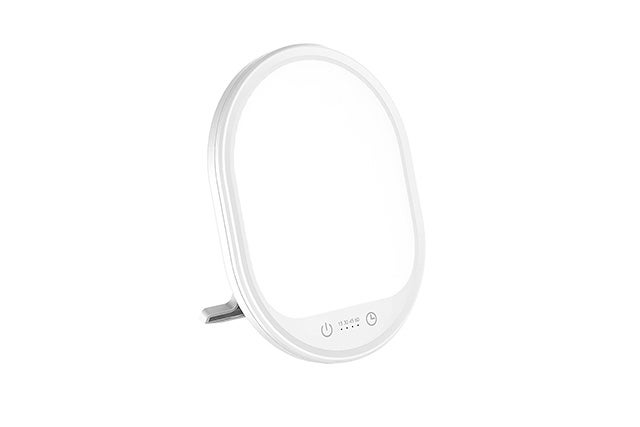
Highlights
- Price Range: $20 – $30
- Size: 6.9 x 5.1 x 0.6 inches
- Intensity: 10,000 lux
Pros
- Timer function.
- Adjustable brightness.
- Rotating bracket.
Cons
- Brightness makes button usage difficult.
This small and unobtrusive light may fool you with its size, but it is one of the most powerful light therapy lamps within its price range. You can choose between three brightness levels thanks to the integrated dimming function.
Mind you that some users have complained about the flat buttons being almost impossible to see. That’s because you have to stare at the bright lamps to see the buttons, causing a very intense glare.
2. Circadian Optics Light Therapy Lamp – Runner Up
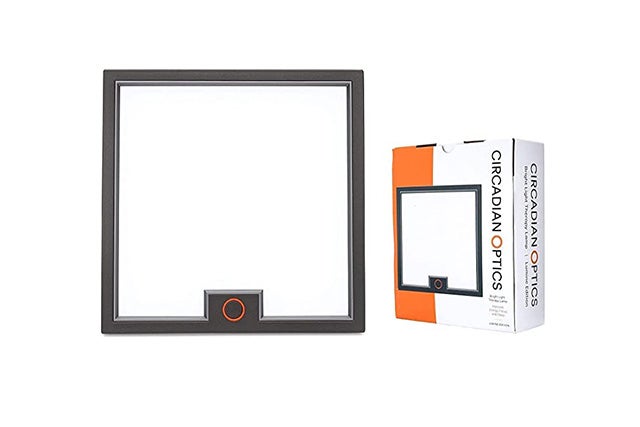
Highlights
- Price Range: $20 – $30
- Size: 6.69 x 3.94 x 6.3 inches
- Intensity: 10,000 lux
Pros
- UV-free.
- Mimics daylight colors.
- Easy one-touch operation.
Cons
- No USB power adapter, only plug-in.
Circadian Optics is a brand that you’re going to see a lot throughout this article because they make some of the best and most affordable light therapy lamps that you can currently buy.
This therapeutic light gives the needed 10,000 lux of brightness to help alleviate the winter blues, help us concentrate better, and increase energy. The colors produced by the light therapy lamp are meant to be analogous to those produced by natural light.
3. Rsccleaner Store Light Therapy Lamp – Best Design
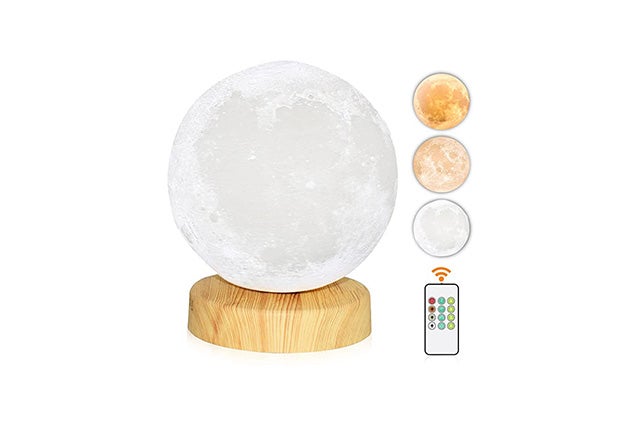
Highlights
- Price Range: $40 – $50
- Size: 271.65″ D x 5.91″ W x 6.93″ H
- Intensity: 10,000 lux
Pros
- Included remote control.
- 4 brightness levels.
- Integrated timer.
Cons
- Can’t use a lamp without the remote.
This moon-shaped light therapy lamp is one of the cutest things you’ll see today. It’s designed with a compact size that makes it fit on even the smallest tables. You can select between 3 color temperatures and 4 brightness levels that will ensure you get the light intensity and brightness that you want. This makes the lamp pretty versatile, and you can use it for light therapy but also set a relaxing mood in the room.
4. Verilux® HappyLight® – Budget Pick
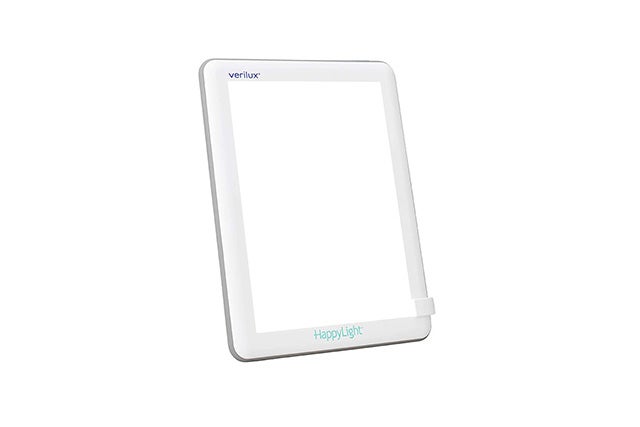
Highlights
- Price Range: $30 – $40
- Size: 6.6″ D x 6.5″ W x 8.58″ H
- Intensity: 10,000 lux
Pros
- Portable ultra-thin design.
- Detachable stand.
- Full-spectrum light.
Cons
- The stand is not very practical.
The HappyLight is a budget pick with the specification of a more expensive option. You may use your HappyLight Lucent anywhere you need it thanks to the detachable stand, or wall mount it in a suitable position for your daily light treatment practice.
You will have a positive experience with light therapy since the brilliant light coming from the 72 LED lights is well spread, free of UV rays, and does not flicker, glare, or create hot spots.
5. HILOLY Store Light Therapy Lamp – Best Portable
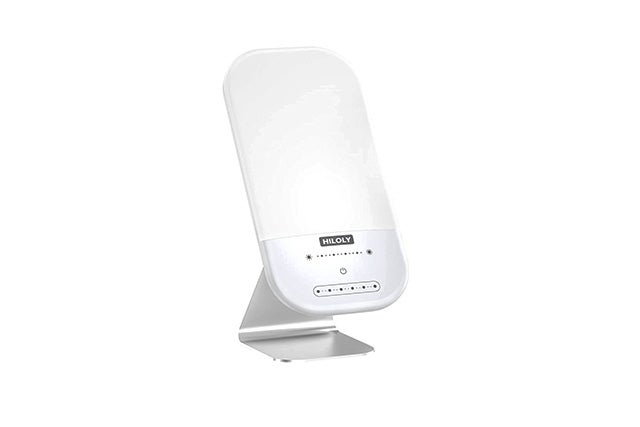
Highlights
- Price Range: $60 – $70
- Size: 6.88 x 4 x 14.56 inches
- Intensity: 10,000 lux
Pros
- 6 brightness levels.
- Multiple size options.
- 6 timer options.
Cons
- Some suspect it has UV light.
The HILOLY lamps is another tablet-style tabletop unit designed to bring technology and light benefits in a single product. You can choose between multiple size options, but the specification and prices you see at this link are for the 12-inch lamp.
The unit allows you to choose between 6 different brightness levels thanks to the dimmer that’s located on the unit. The alloy stand is equipped with silicone pads that prevent the lamp from sliding on the table. You can adjust the light up or down thanks to its 55-degree angle.
6. dpl IIa-Professional Light Panel – Best Anti-Aging
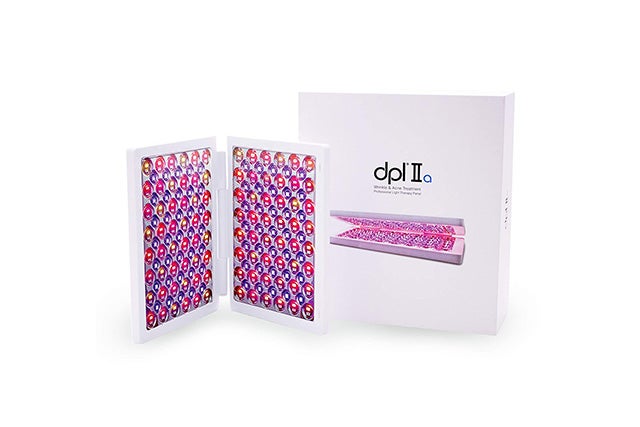
Highlights
- Price Range: $300 – $400
- Size: 11 x 4.25 x 9.5 inches
- Intensity: not specified
Pros
- Powerful acne treatment.
- Reduces fine lines.
- Slows down the aging process.
Cons
- The lights are very powerful.
The Lux Collection dpl IIa does everything. It gives you access to FDA-approved technologies for wrinkle reduction and acne alleviation. In just 3 minutes per day, you can see a variety of skin improvements from the convenience of your own home using a single device.
With three separate settings, this device contains light-emitting diodes that emit appropriate wavelengths to improve your skin’s appearance. It’s anti-aging light therapy like you’ve never seen at home before.
7. Circadian Optics Light Lumos Therapy Lamp
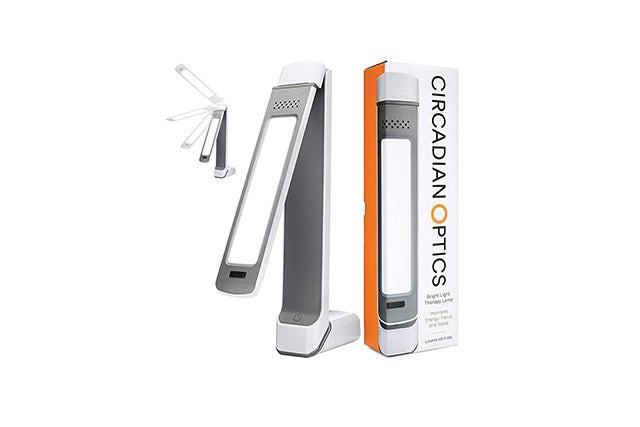
Highlights
- Price Range: $60 – $70
- Size: 14 x 1.5 x 3.5 inches
- Intensity: 10,000 lux
Pros
- Adjustable angle.
- Long bulb lifespan.
- User-friendly design.
Cons
- Questionable construction quality.
Let’s welcome Circadian Optics once again, this time with an even more flexible table light that can be used as a light therapy lamp. With a one-touch operation, the unit is built to provide you with the best experience in terms of user function. That means anyone can use it with ease, regardless of their experience with tech items.
Designed with three brightness levels, you can enjoy the power of 10,000 lux to boost your mood and tone down some of that wintertime sadness.
8. Circadian Optics Light Lattis Therapy Lamp – Best Value
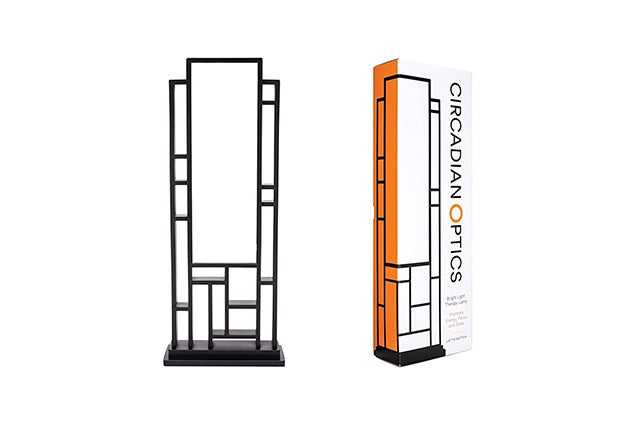
Highlights
- Price Range: $60 – $70
- Size: 5.51″ D x 6″ W x 15.75″ H
- Intensity: 10,000 lux
Pros
- 3 brightness levels.
- No UV light.
- Long bulb life.
Cons
- Larger than other options.
This lamp could be perfect for you if you like the way that contemporary furnishings seem. It provides 10,000 lux of full-spectrum white light and uses LED technology. In addition to this, it offers three different levels of brightness, allowing you to adjust the light coming into the room as needed.
LED light has a longer lifespan than fluorescent lighting, which is one reason why many consumers prefer it. The bulb in question has a limited surface area and cannot be moved from its predetermined location, therefore it cannot be adjusted. Despite this, it could be quite useful as a lamp for travel or in places with little space.
What Is a Light Therapy Lamp?
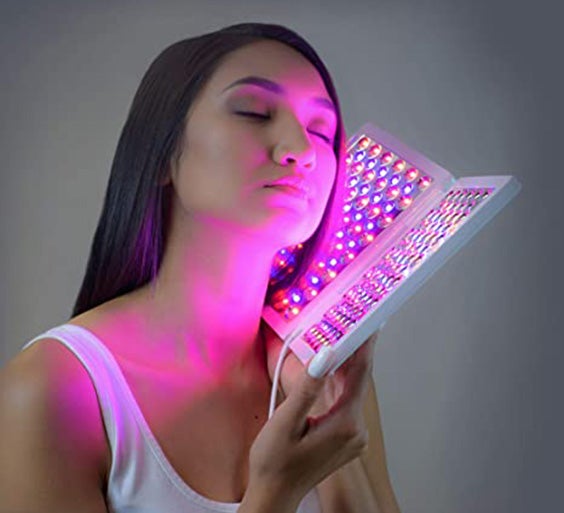
Bright lamps known as light therapy lamps are typically utilized in the treatment of seasonal affective disorder (also known as SAD), depression, and sleep disturbances.
You may find these lamps almost anywhere, and you can even use them in your own home. Simply switch on your light therapy lamp and position yourself close to it for a predetermined amount of time (usually anywhere from 15 to 60 minutes).
How Do Light Therapy Lamps Work?
During the winter season, people get less vitamin D, which has been associated with depression. The sunlight changes also alter our circadian rhythm, which is the body’s internal biological clock that regulates various brain activities and hormone production.
Vitamin D shortages have been connected to depression. Alterations in the levels of mood-related substances can bring on symptoms of SAD, often known as the winter blues or seasonal sadness, in certain individuals.
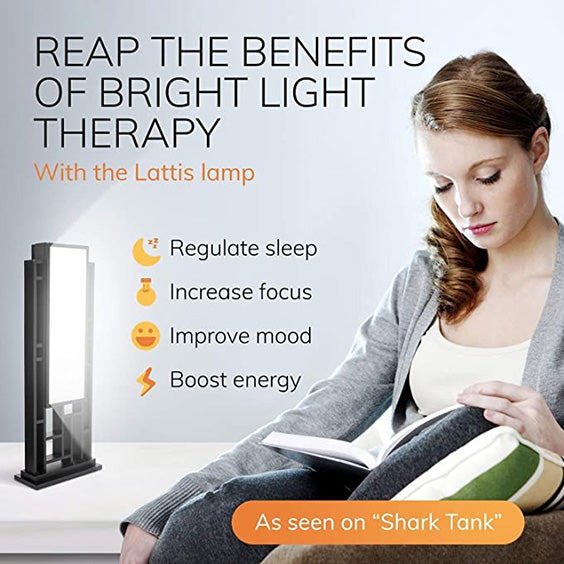
A person must have experienced at least three episodes of mood abnormalities over three distinct winter seasons, with at least two of those episodes occurring consecutively, for an episode of significant depression to be categorized as seasonal affective disorder.
In addition, there should not be any link between the episode and a substantial situational stressor, such as a recent death in the family, a divorce, or a loss of employment.
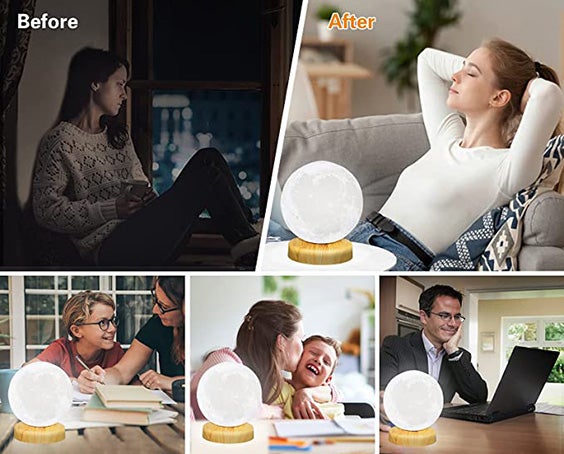
There is good news for people who suffer from the winter blues or perhaps even just a minor case of seasonal sadness: there are several bright light treatments that can assist regulate melatonin and other hormones that are influenced by the circadian rhythm changes. SAD lamps are designed to replicate sunlight, which helps activate the brain to release serotonin.
Light therapy is not something that should be used by those who suffer from bipolar disorder unless they are under the direct care and supervision of a medical professional.
Types of Light Therapy Lamps
— Light Box
Clinical research on SAD typically employs light boxes as the primary method of light therapy. Flat screens that emit full-spectrum fluorescent light, often at an intensity of 10,000 lux, are what you’ll find in this category. It is essential to position a light box by the guidelines provided by the manufacturer and to make use of it at the same time every day.
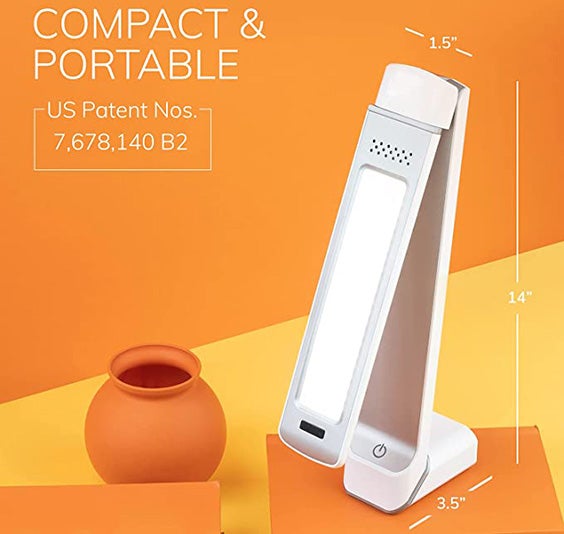
The recommended daily use time for a light box is anywhere between thirty and sixty minutes. If you don’t have the money to buy a light box, you can go to a health club that has a room specifically designed with light boxes and sit in front of them.
— Dawn Simulator
Dawn simulators are computer programs that recreate the steady ascent of the sun. There are two distinct varieties:
- Those that provide an illusion of natural dawn that is representative of a sunrise in the springtime.
- Those that create an illusion of sigmoid-shaped daybreak, which can last anywhere from half an hour to two hours.
In a normal situation, you would stay asleep through dawn and awaken during the simulated daybreak. These lights are particularly efficient because the light signals sent out in the early morning are far more potent than the light signals sent out at any other time of the day.
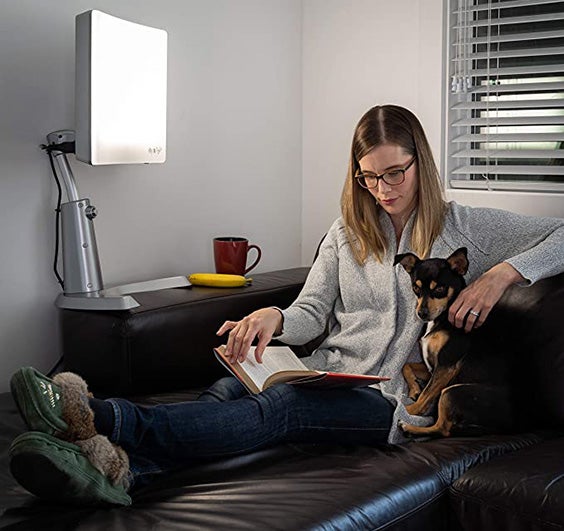
Dawn simulators can take the form of standalone alarm clock gadgets or compact computer systems that are designed to be plugged into a table light.
— Bright Light Sun Visors
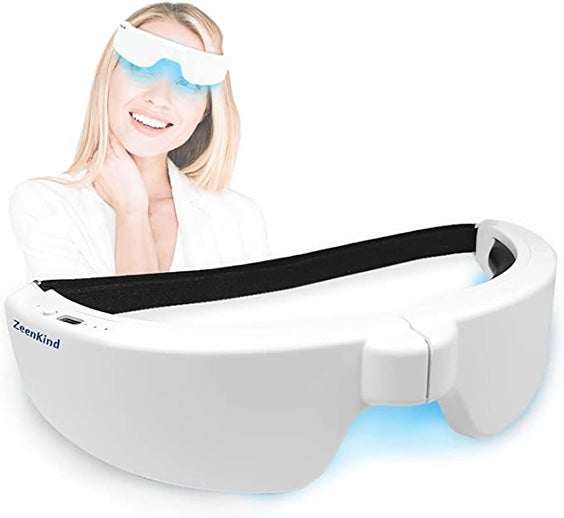
These are meant to be worn as hats and each one acts as a personal light box for the wearer. Because of the close closeness of intense light to your eyes, medical professionals are less likely to recommend using visors. Therefore, you should use them with extreme caution. In addition, the price is typically over $200.
— Natural Spectrum Bulbs
People who have seasonal affective disorder and have used full-spectrum light bulbs report that they have had success with them when they use full-spectrum bulbs with a minimum of 10,000 lux in intensity. However, the scientific research on the advantages of full-spectrum light bulbs is conflicting. There is evidence that they can help regulate your circadian cycle and improve your mood.
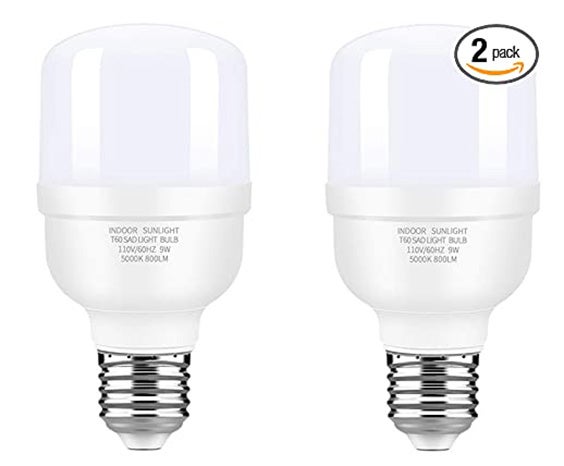
Natural spectrum light bulbs mimic the color temperature of natural daylight and are versatile enough to be used in both table and floor lamps. They are not as awkward to carry around as light boxes are.
— Bluewave Technology
According to several studies, BlueWave technology, also known as blue light, is superior to other types of light in terms of its ability to alter circadian cycles, reduce melatonin levels, and control the circadian response.
They discovered that blue light reduced melatonin production for approximately twice as long as green light did and that it also disrupted circadian rhythms by approximately twice as much.
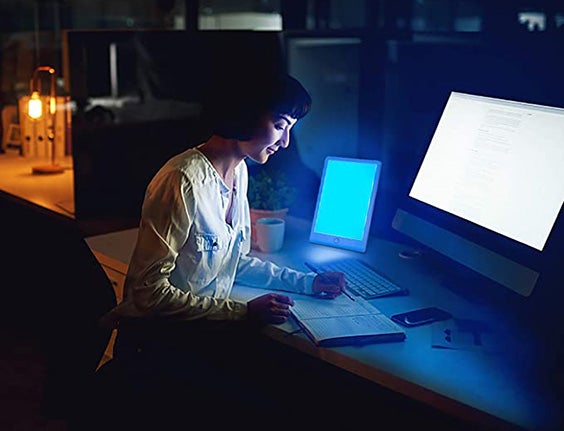
At night, however, the intensity of blue light, particularly the blue light emitted by electronic devices such as smartphones and tablet computers, can constitute a significant safety hazard.
Not only did researchers at Harvard discover that it disrupted sleep, but they also found that exposure to blue light at night was associated with an increased risk of obesity, heart disease, diabetes, and several different types of cancer.
What to Consider When Buying a Light Therapy Lamp
Type
Light therapy lamps are available in a wide variety of styles, ranging from alarm clocks to floor lamps. Think about when you want to use the lamp, the amount of space you have available for it, and where you plan on placing it you have before deciding on the type of light therapy lamp that will work best for you.
Size
There is a wide range of sizes and weights available for light therapy lamps. Therefore, before making a purchase, you should think about where you intend to put your lamp. More compact lamps can be stored on packed bookcases or nightstands.
Greater areas of a room can be illuminated by using larger lamps. Lamps that aren’t too heavy are a breeze to lug back and forth from the office. In addition, it is recommended to store heavy lamps in a stable location.
Intensity
The unit of measurement for brightness is called a lux. Therefore, a greater lux rating indicates a brighter lamp. The use of a light therapy lamp that provides 10,000 lux of light exposure is recommended by industry professionals as the optimal level of light intensity for optimal results.
According to research, the average amount of light provided by indoor lighting is 100 lux, while the amount of light provided by natural sunlight is 50,000 lux. Therefore, the ideal setting for your light treatment lamp is somewhere in the middle.
Settings
Different light therapy lamps come with a range of brightness levels, allowing you to adjust the level of illumination provided by the lamp to suit your preferences. This may make it simpler for you to use your lamp at various times of the day, and it may also assist you in becoming accustomed to the lamp if you are just starting to make use of it.
However, light therapy lamps that do not have settings that can be adjusted can still be beneficial: They are typically simple to operate because their designs do not include any unnecessary frills.
The Final Verdict
Thankfully, there are plenty of decent light therapy lamps to choose from. In fact, with all these options, the choice might feel overwhelming, which is why you should remember the most important things to look out for in a therapy lamp: intensity, type, and size. That way, you can filter even the best light therapy lamps to find one that stands out for your needs. Now peruse our list of the best weighted blankets to go with your therapy light!
Frequently Asked Questions
Some of the best lights for light therapy are light boxes. They are commonly used in SAD clinical research.
Some of the lamps that are good for depression include light therapy lamps that have an intensity of at least 10,000 lux.
Experts recommend starting light therapy as soon as you wake up. The best hours are between 6 to 9 in the morning. You should notice an improvement in about 2 weeks of consistent light therapy.
